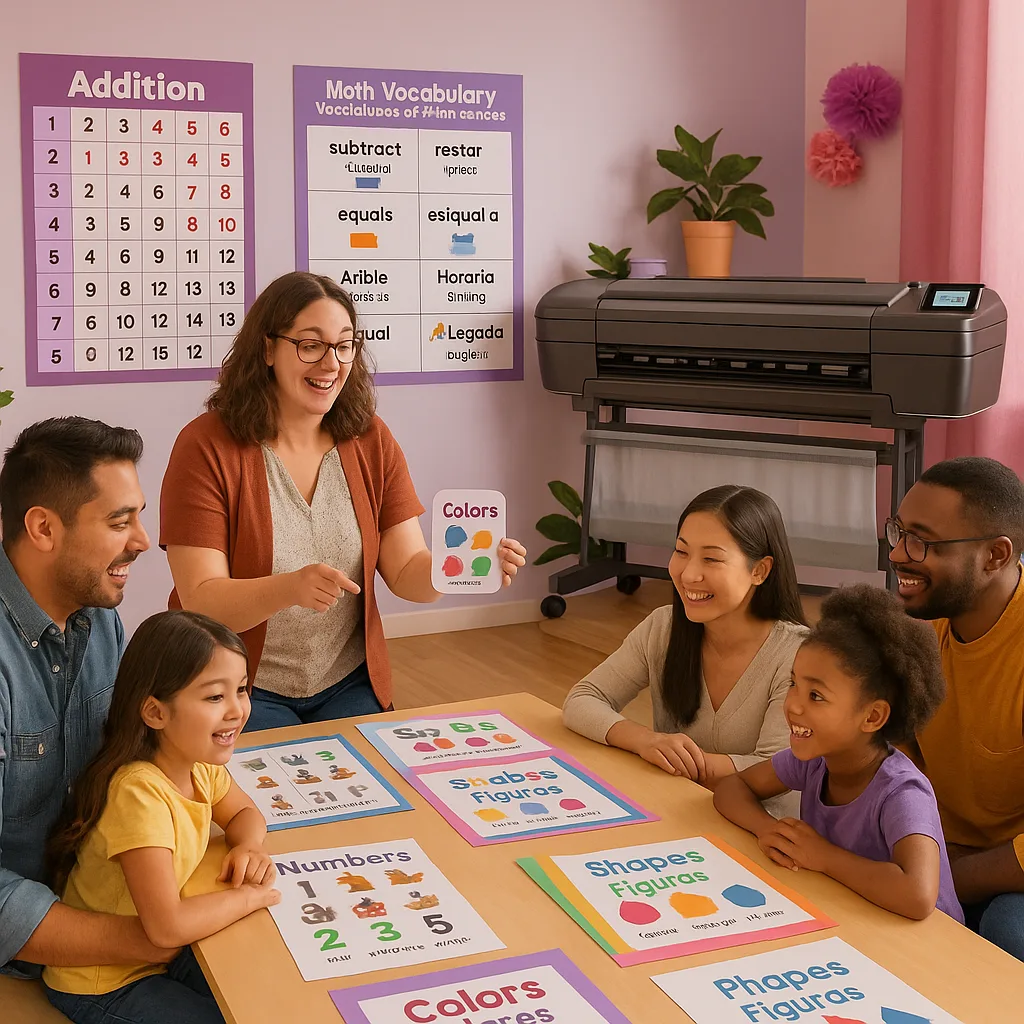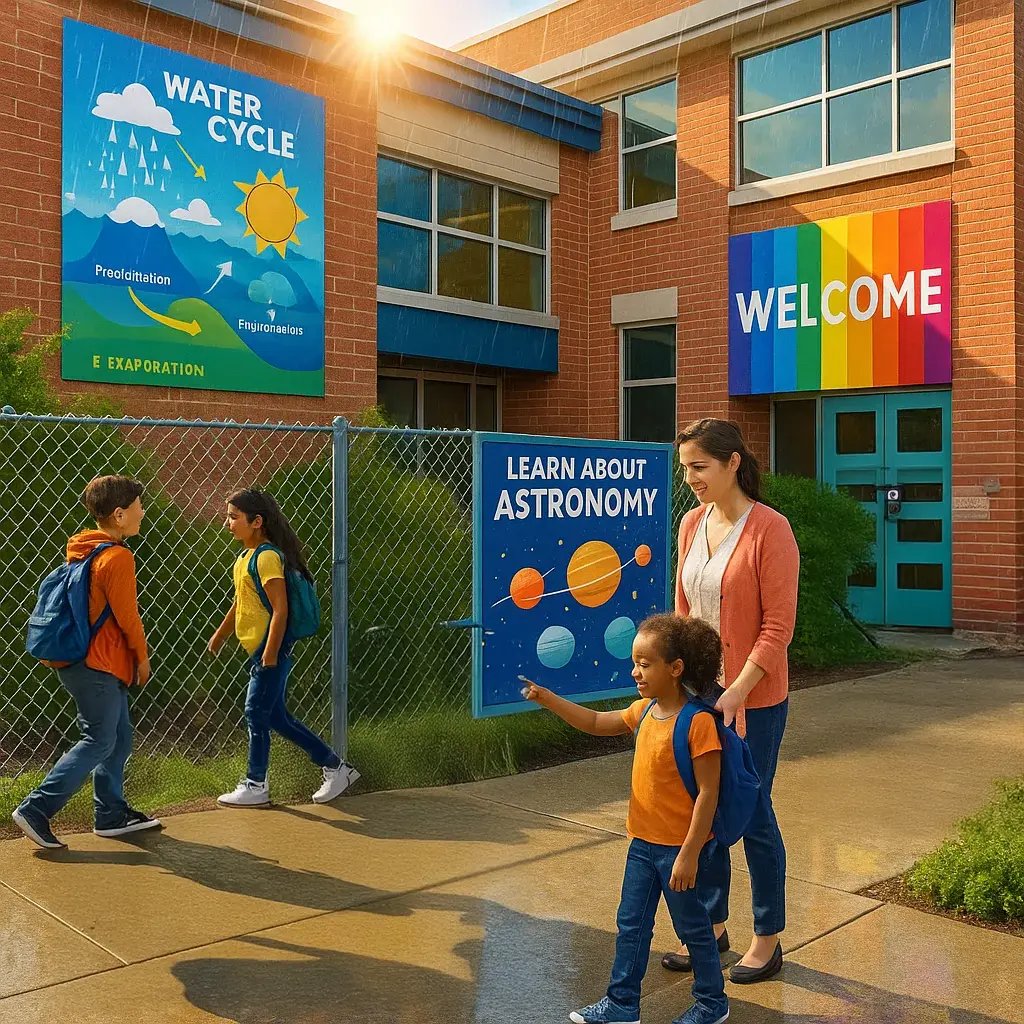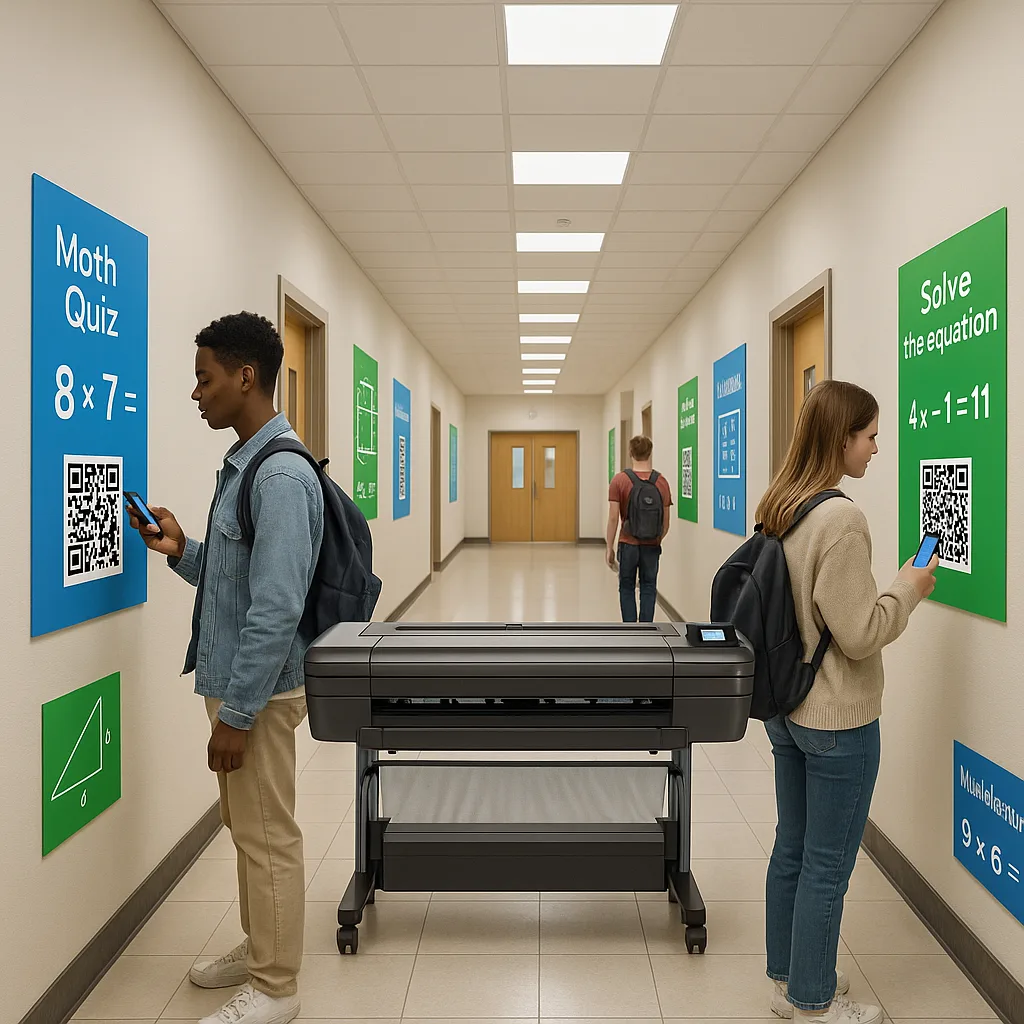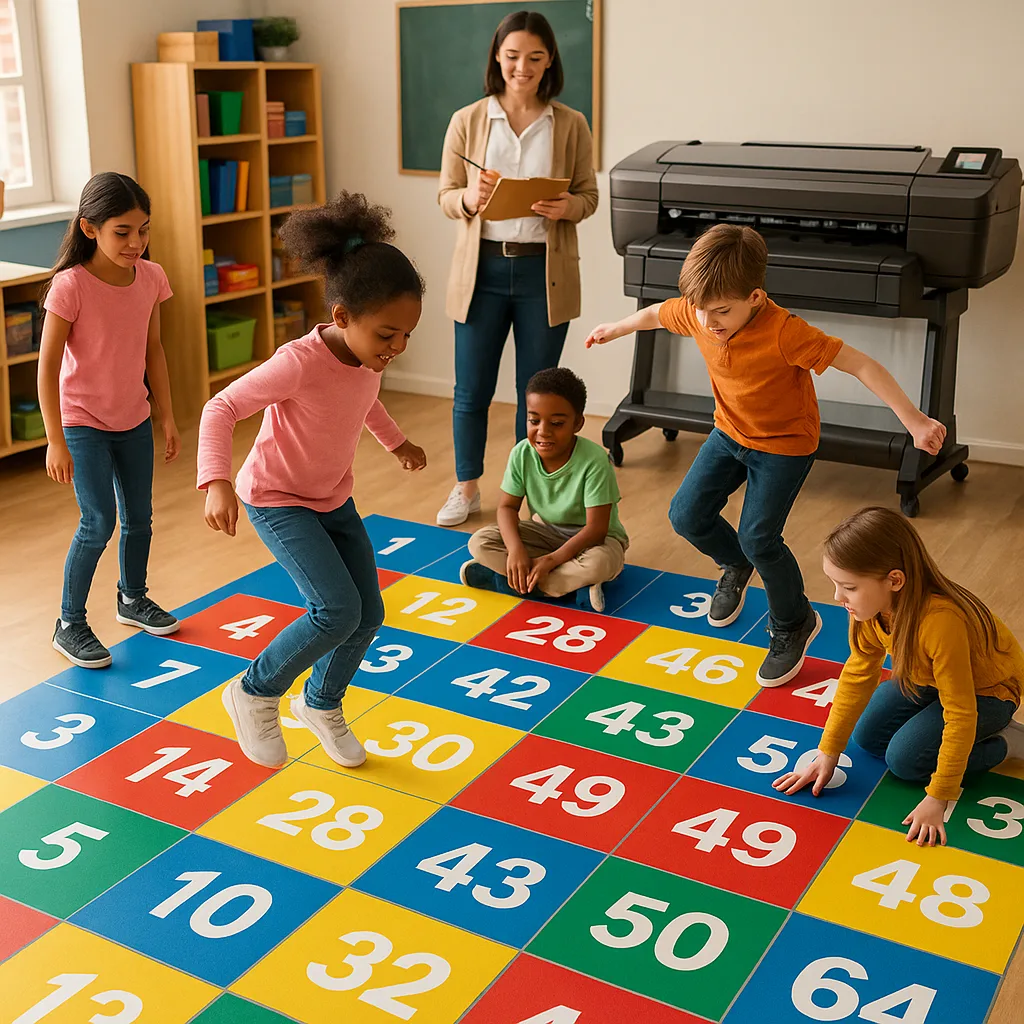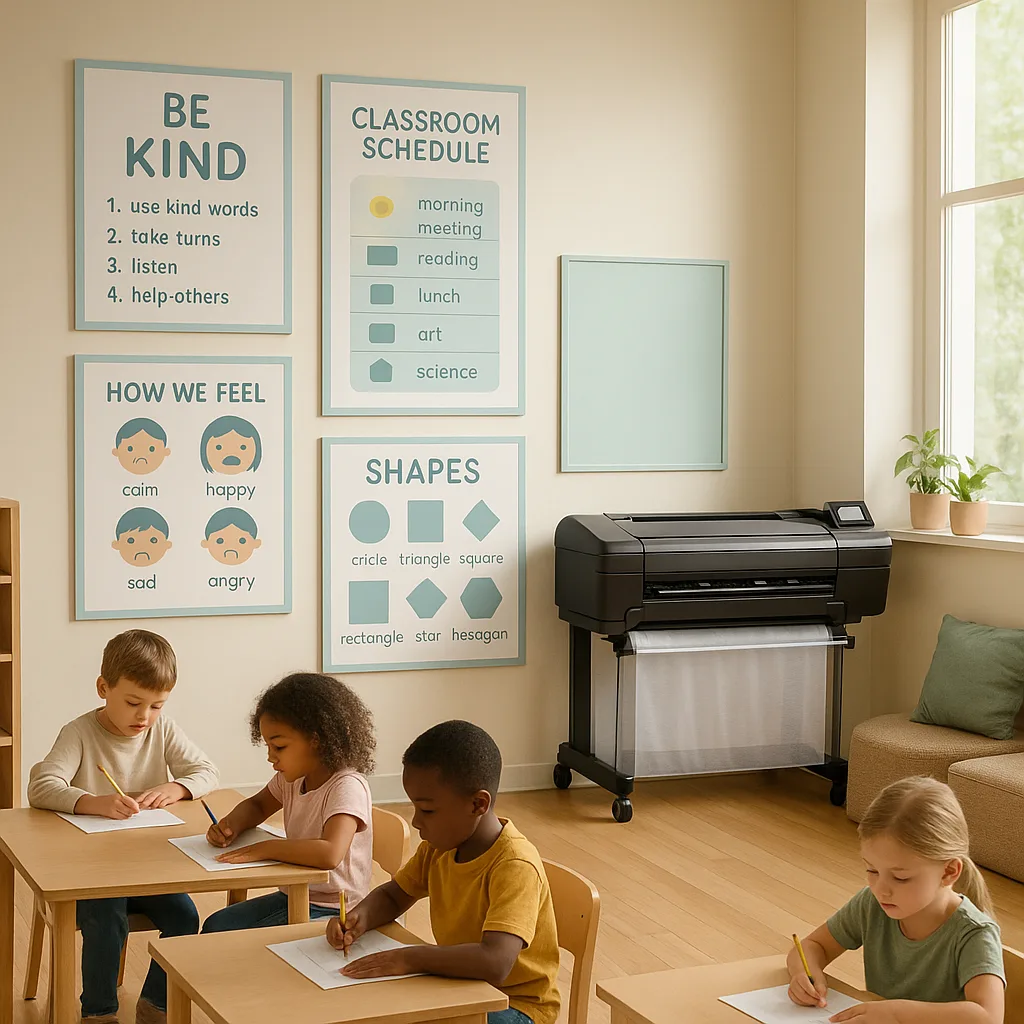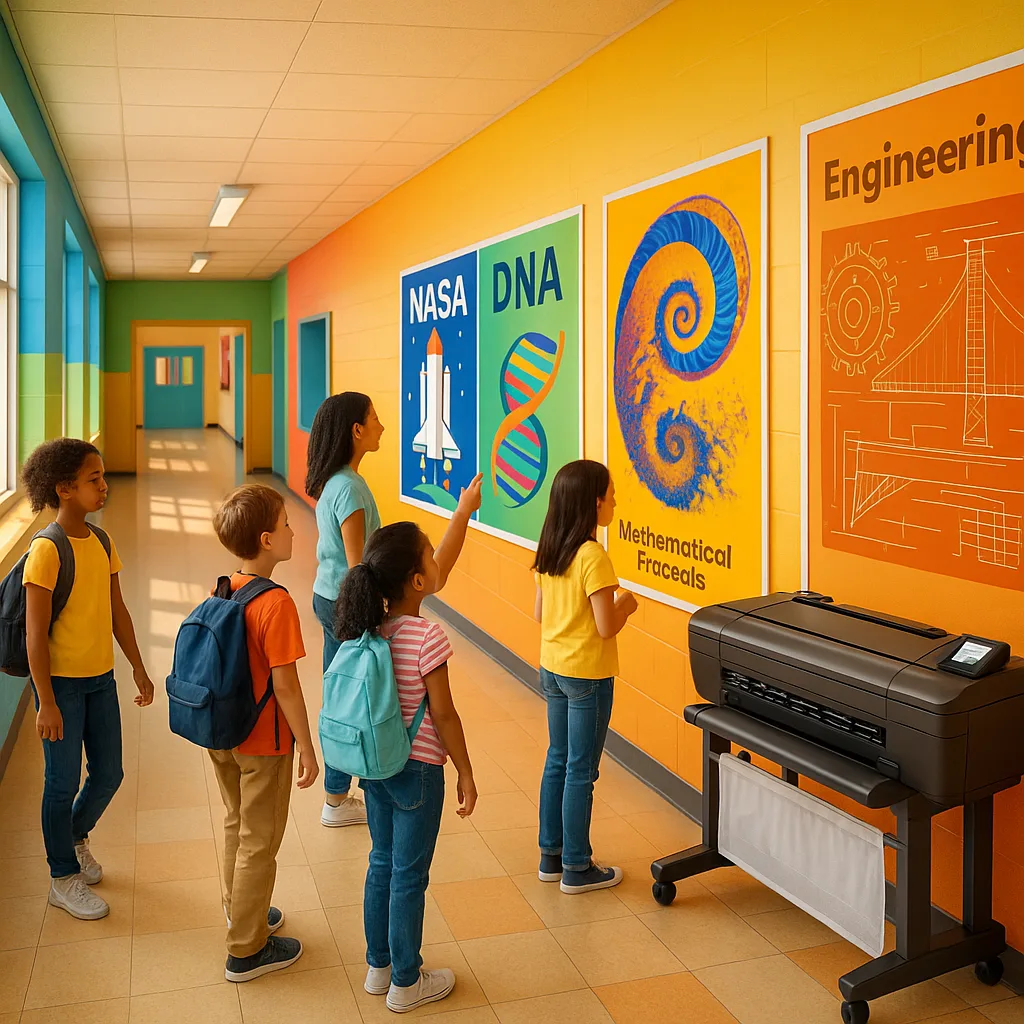
How a Poster Printer for Teachers Can Solve Morning Chaos
Research from the National Association for the Education of Young Children shows that predictable routines reduce anxiety in children by up to 40%. When students know exactly what to expect, their stress hormones decrease, and their learning readiness increases. Visual schedules tap into this need for predictability while supporting diverse learning styles.
During my student teaching, I watched veteran teachers use hand-drawn morning charts that faded and tore by October. Now, with access to a poster printer machine for schools, I create durable, professional-looking visual schedules that last all year. The difference in student engagement is remarkable.
The Hidden Cost of Morning Chaos
Before implementing visual systems, I spent 20-30 minutes each morning redirecting students, answering repetitive questions, and managing meltdowns. That’s 2.5 hours per week of lost instructional time! Studies by the Institute of Education Sciences confirm that smooth transitions can recover up to 15% of daily learning time.
Creating Your Visual Morning System with Poster Printing for Teachers Morning Routines
The magic happens when you break down morning procedures into visual chunks that students can follow independently. Here’s my tested framework that works even with the wiggliest six-year-olds.
Essential Components of Morning Visual Schedules
First, identify your non-negotiable morning tasks. Mine include:
– Hanging up backpacks and coats
– Turning in homework folders
– Making lunch choices
– Completing morning work
– Joining morning meeting
Each task gets its own visual card with both pictures and words. Using poster printing for teachers morning routines, I create these at 11×17 inches – large enough for the whole class to see but small enough to arrange flexibly.
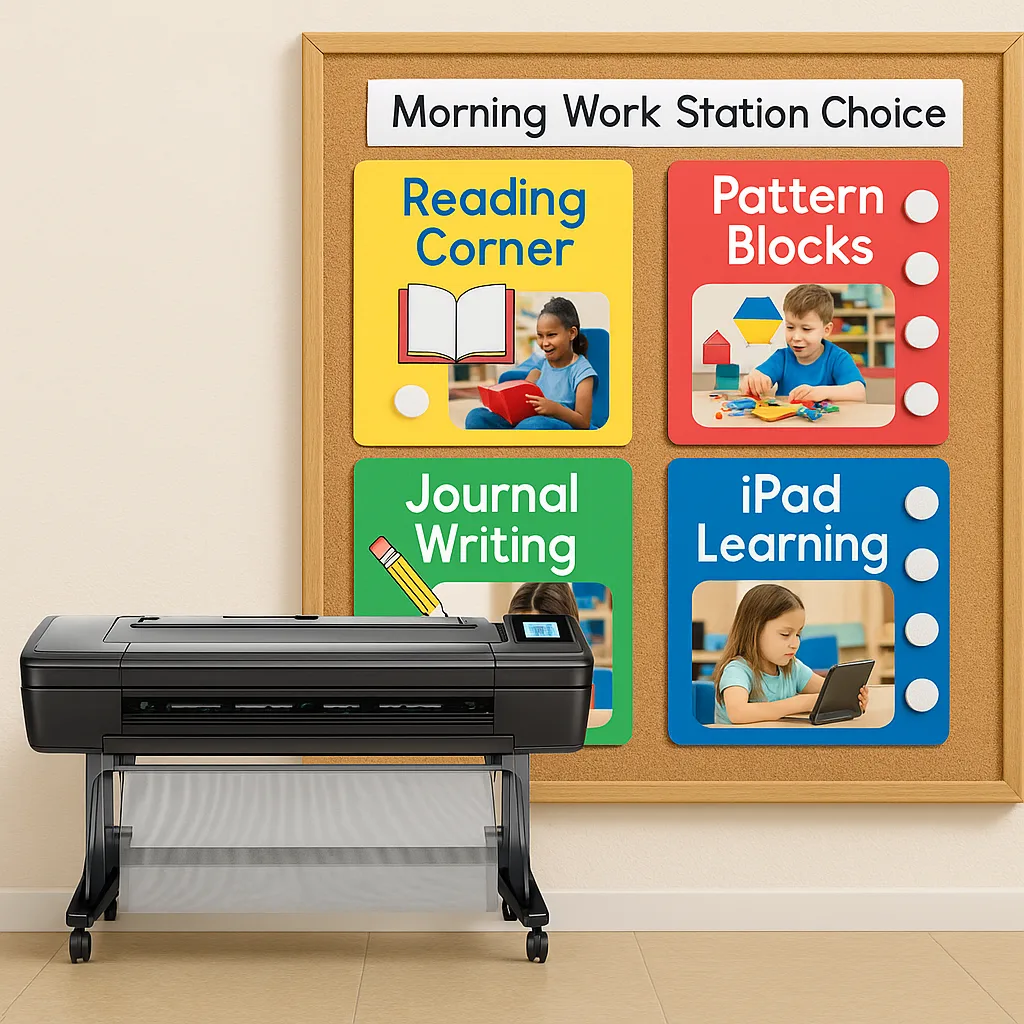
Design Elements That Work
Color psychology plays a huge role in morning success. Based on classroom environment research from Edutopia, I use:
– Soft blue backgrounds for calming arrival procedures
– Sunshine yellow for energizing morning work stations
– Mint green for SEL check-in areas
The Education Studio 24″ Package handles these colors beautifully, producing vibrant displays that maintain their brightness all year.
Step-by-Step Implementation Guide
Starting a visual morning system feels overwhelming, but breaking it into phases makes it manageable. Here’s how I rolled it out over three weeks.
Week 1: Arrival Procedures
Focus solely on what happens when students enter the room. Create a poster showing:
1. Backpack on hook (photo of actual classroom hooks)
2. Folder in bin (arrow pointing to homework basket)
3. Lunch choice chart (visual menu options)
4. Find your morning work seat
Practice this sequence repeatedly. I even created a morning arrival song to the tune of “Head, Shoulders, Knees, and Toes” that matches our visual chart!
Week 2: Morning Work Stations
Once arrival runs smoothly, introduce choice-based morning work. My poster printer machine for schools helped create station cards featuring:
– Quiet reading corner (book icon + comfy spot photo)
– Pattern block challenges (visual examples)
– Journal prompts (thought bubble graphics)
– iPad learning apps (device icon + app logos)
Students match their name card to a station poster, promoting both literacy and independence. The visual nature eliminates “Where do I go?” questions completely.
Week 3: SEL Check-In Integration
Social-emotional learning can’t wait until later in the day. Our morning routine now includes a feelings check-in board created through poster printing for teachers morning routines. Students move their photo to match their emotional state using zones inspired by The Zones of Regulation:
– Blue Zone: Tired, sad, sick
– Green Zone: Happy, calm, ready
– Yellow Zone: Silly, excited, nervous
– Red Zone: Angry, frustrated, scared
This visual system alerts me to students needing extra support before academics begin.
Customization Tips for Different Grade Levels and Needs
What works for my first-graders might need tweaking for your classroom. Here’s how to adapt visual morning systems across contexts.
Pre-K and Kindergarten Modifications
Younger students need even more visual support. Consider:
– Using actual photos instead of icons
– Creating larger posters with fewer steps
– Adding tactile elements like velcro for interactive charts
– Including parent figures in arrival visuals for separation anxiety
Supporting English Language Learners
In my classroom where 40% of students speak Spanish at home, bilingual visual schedules are essential. The Lifetime Design Service helped me create culturally responsive morning cards featuring diverse children and multilingual labels.
Accommodating Special Needs
For students with autism, ADHD, or processing differences:
– Use consistent symbols from communication boards
– Create individual desktop versions of larger posters
– Add time indicators (5-minute sand timers)
– Include sensory break options in morning choices
Troubleshooting Common Morning Routine Challenges with Poster Printing for Teachers Morning Routines
Even the best visual systems hit snags. Here’s how I problem-solve typical issues.
“But I Can’t Read Yet!”
This concern from parents dissolves when they see how picture-heavy our schedules are. Pairing images with words actually accelerates reading readiness. Students begin recognizing high-frequency words like “backpack” and “folder” within weeks.
Poster Placement Problems
Strategic placement makes or breaks your system. After trying various arrangements, I found success with:
– Arrival procedures at child eye-level by the door
– Morning work options near supply stations
– SEL check-in by the carpet area
– All posters laminated using the PSE Cool 25″ Cold Laminator for durability
Managing Late Arrivals
Late students need to catch up without disrupting others. I created a separate “Late Arrival” visual card that condenses our routine into essential steps. This prevents the dreaded “What did I miss?” interruptions.
Measuring Success: Data That Proves Visual Schedules Work
After implementing visual morning routines, I tracked specific improvements:
Time Savings: Morning transitions decreased from 25 minutes to 12 minutes
Behavioral Incidents: Morning redirections dropped by 75%
Student Independence: 90% of students complete routines without prompting by week 4
Teacher Stress: My morning cortisol levels (yes, I tested!) decreased significantly
These results align with research from the PBIS Technical Assistance Center showing visual supports reduce challenging behaviors by up to 80%.
Extending Visual Success Throughout the Day
Once morning routines run smoothly, the visual schedule concept expands naturally. Using the same poster printer machine for schools, I’ve created:
– Transition cards for subject changes
– Center rotation charts
– Dismissal procedures
– Emergency drill visuals
The consistency in design and color coding means students transfer their morning independence skills throughout the day.
Creating a Visual Schedule Toolkit
Build a collection of reusable visual elements:
– Arrow symbols for sequence
– Clock faces for time awareness
– Emoji-style feelings faces
– Weather icons for daily updates
– Number cards for counting activities
Store digital files organized by theme for quick updates. The Satin Photo Paper works perfectly for these frequently-handled materials.
Family Engagement Through Visual Communication
Parents love visual schedules too! I send home mini versions of our morning routine for families to practice. Some parents have even requested custom versions for home routines. This home-school connection reinforces consistency and reduces morning battles on both ends.
Digital Extensions
While physical posters anchor our classroom system, I also share digital versions through our class app. Parents can review routines with children at home, and substitutes instantly understand our procedures. However, nothing replaces the impact of large, colorful classroom displays that students can reference independently.
Reflecting on Transformation
Four months into using visual morning schedules, my classroom feels completely different. Instead of starting each day stressed and reactive, I greet students calmly while they navigate routines independently. The time we’ve reclaimed goes toward morning meetings that build community and joy.
Research consistently shows that classroom environment impacts learning outcomes. By investing in quality poster printing for teachers morning routines, we create spaces that support both academic and emotional growth. The Demo Video shows exactly how easy creating these materials can be.
Your Visual Morning Routine Action Plan
Ready to transform your mornings? Start small:
1. Identify your biggest morning pain point
2. Create one visual schedule addressing that issue
3. Practice with students for one week
4. Gather feedback and adjust
5. Add another visual element
6. Celebrate progress!
Remember, perfection isn’t the goal – progress is. Even one well-designed visual schedule can shift your entire morning dynamic.
The journey from morning chaos to calm doesn’t happen overnight. Yet with thoughtful visual supports, quality materials from a poster printer machine for schools, and consistent implementation, you’ll wonder how you ever managed without them. Your future self – and your students – will thank you for making mornings magical instead of maddening.
Ready to Create Your Own Visual Morning Magic?

